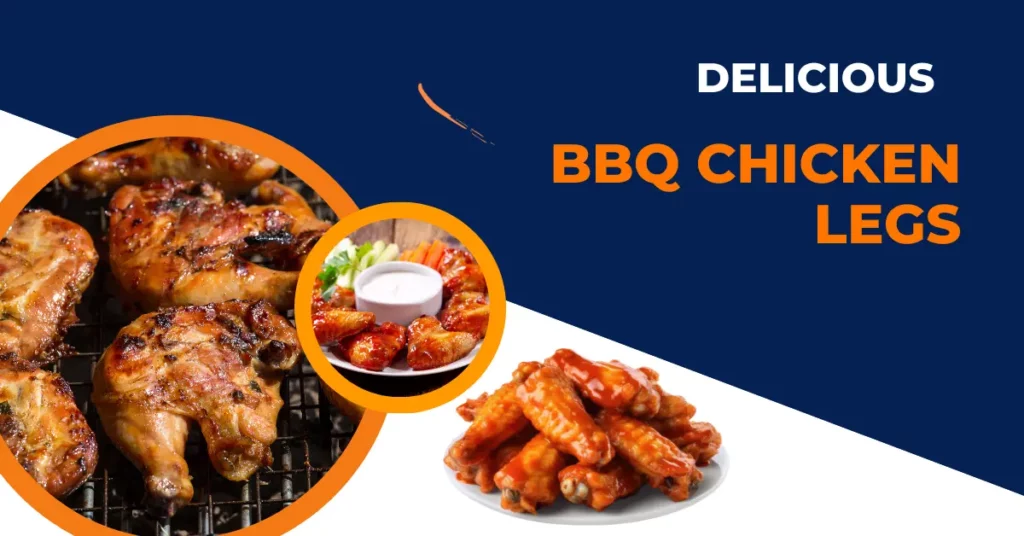This post may contain affiliate links. If you use these links to buy something we may earn a small commission. Thanks.
When it comes to grilling, few dishes are as universally loved as BBQ chicken legs. They’re juicy, flavorful, and a perfect choice for backyard barbecues or family dinners. However, grilling chicken legs to perfection requires proper preparation, technique, and attention to detail. In this guide, we’ll walk you through every step of the process so you can achieve delicious, smoky, and tender BBQ chicken legs every time.
Preparing the Chicken Legs
Choosing the Right Chicken Legs
The first step to great BBQ chicken legs is starting with the right product. Fresh chicken legs are often preferred over frozen, as they retain more natural juices. When buying, look for legs that are similar in size so they cook evenly. If using frozen chicken, ensure it is completely thawed before cooking to prevent uneven cooking.
Cleaning and Trimming
Before you begin seasoning, rinse the chicken legs under cold water and pat them dry with paper towels. Removing excess moisture helps the seasoning stick better. Trim off any loose skin or excess fat that might cause flare-ups on the grill. This step also helps improve the overall texture and flavor of the chicken.
Marinating the Chicken
Marination is the secret to infusing chicken with deep flavor. A simple marinade can include:
- 1 cup of BBQ sauce
- 2 tablespoons of olive oil
- 1 tablespoon of apple cider vinegar
- 1 teaspoon each of garlic powder, onion powder, paprika, and black pepper
Mix the ingredients in a bowl, coat the chicken legs evenly, and place them in a resealable plastic bag or covered container. Let the chicken marinate in the refrigerator for at least 2 hours—overnight if possible—to allow the flavors to penetrate deeply.

Prepping the Grill
Choosing the Right Grill
Grilling chicken legs can be done on gas, charcoal, or pellet grills. Each type has its own benefits:
- Gas Grill: Provides consistent heat and is easy to control.
- Charcoal Grill: Offers smoky flavor, which pairs beautifully with BBQ chicken.
- Pellet Grill: Combines the ease of gas grills with the flavor of charcoal.
Preheating the Grill
Proper preheating is crucial for even cooking. Heat your grill to medium-high, around 375–400°F. For charcoal grills, arrange coals to create direct and indirect heat zones. For gas grills, leave one burner off to create an indirect heat zone.
Oiling the Grates
To prevent sticking, lightly oil the grates using a paper towel dipped in vegetable oil. Use long-handled tongs to rub the oiled towel across the grates once they’re hot. This ensures your chicken doesn’t tear or stick during grilling.
Grilling the Chicken Legs
Cooking with Indirect Heat
Start grilling the chicken legs over indirect heat. Place them on the cooler side of the grill (away from direct flames) and close the lid. Cook the chicken for about 20–25 minutes, turning occasionally. This slow cooking method ensures the meat cooks evenly and retains its juiciness.
Using a Meat Thermometer
A meat thermometer is your best friend when grilling chicken. Insert the thermometer into the thickest part of the meat, avoiding the bone. The internal temperature should reach 165°F for fully cooked chicken.
Searing on Direct Heat
Once the chicken is nearly cooked through, move it to the hotter side of the grill. Sear each side for 2–3 minutes to develop a crispy, caramelized crust. This step adds texture and enhances the smoky BBQ flavor.
Adding BBQ Sauce
When to Apply BBQ Sauce
Applying BBQ sauce too early can cause it to burn due to its sugar content. The ideal time to start saucing is during the last 5–10 minutes of grilling.
Techniques for Saucing
Use a basting brush to apply a thin layer of BBQ sauce to the chicken legs. Turn the chicken frequently, brushing on additional layers to build up a sticky glaze. Allow each layer to cook for 1–2 minutes before adding the next for maximum flavor and texture.
Resting and Serving
Resting the Chicken
Once the chicken legs are fully cooked and sauced, remove them from the grill and let them rest for about 5 minutes. Resting allows the juices to redistribute, ensuring each bite is moist and flavorful.
Serving Suggestions
Serve your BBQ chicken legs with classic barbecue sides such as:
- Coleslaw: A creamy, tangy side that complements the smoky chicken.
- Grilled Corn on the Cob: Brush with butter and sprinkle with salt for a simple, tasty addition.
- Potato Salad: A hearty, comforting side dish that’s a BBQ staple.
For a finishing touch, garnish the chicken legs with chopped fresh parsley or cilantro to add a pop of color and freshness.
Tips for Success
- Prevent Flare-Ups: Trim excess fat and manage grill temperature to avoid flare-ups.
- Rotate for Even Cooking: Turn the chicken frequently to ensure even cooking and prevent burning.
- Experiment with Flavors: Try different marinades and BBQ sauces to create unique flavor profiles.
Conclusion
Grilling BBQ chicken legs is an art that, when mastered, yields mouthwatering results. By following these steps—from proper preparation to perfect grilling techniques—you’ll be able to serve up tender, juicy, and flavorful chicken legs that will impress your family and friends. So fire up the grill, gather your ingredients, and get ready to enjoy the ultimate BBQ experience.
